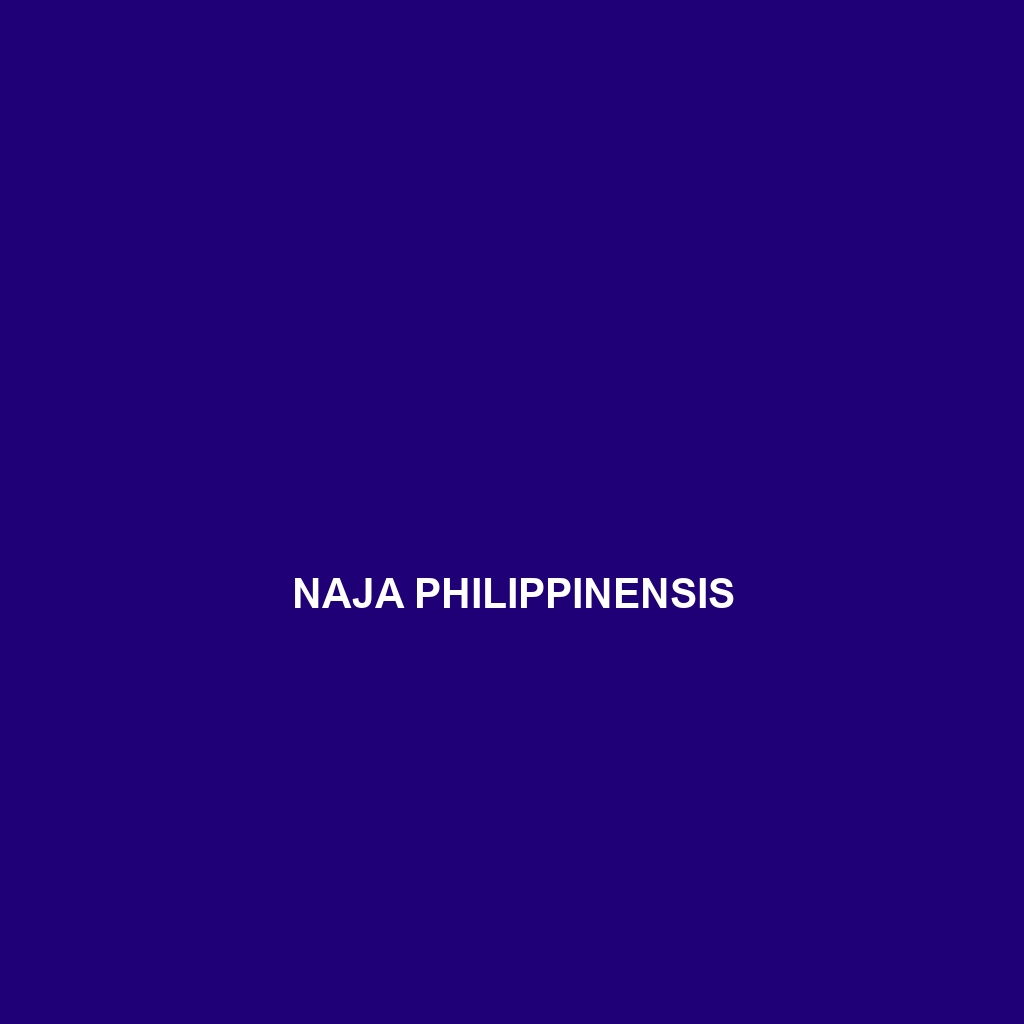Common Name
Naja philippinensis
Scientific Name
Naja philippinensis
Habitat
Naja philippinensis, commonly known as the Philippine cobra, is primarily found in the lush forested areas of the Philippines, particularly in the northern regions such as Luzon and surrounding islands. This species typically inhabits diverse environments including tropical rainforests and moist lowland areas, as well as agricultural fields where they can thrive under ideal climatic conditions. The warm and humid climate of these regions provides the perfect habitat for Naja philippinensis, as it prefers settings that offer plenty of cover and access to prey. Furthermore, their adaptability allows them to reside near human settlements, which often results in increased interactions with people. The Philippine cobra, like other members of the Naja genus, tends to avoid extreme temperatures and thus is often found in shaded areas during hot days.
Physical Characteristics
Naja philippinensis is distinguished by its striking appearance and notable physical features. Adult cobras can grow to an average length of about 1.2 to 1.5 meters (4 to 5 feet), with some individuals possibly reaching lengths up to 2.4 meters (8 feet). They have a distinctive elongated and slender body shape, covered with smooth scales that enhance their agility. The coloration of the Philippine cobra can vary significantly, generally displaying hues that range from light brown to dark gray, often with dark banding that provides excellent camouflage in its natural habitat. Unique to this species is the prominent hood they can display when threatened, which is a defensive mechanism to scare potential predators. Their large, round eyes are equipped with vertical pupils, which further add to their striking appearance.
Behavior
The behavior of Naja philippinensis is fascinating and includes a mix of both terrestrial and arboreal actions. While they primarily roam the ground in search of prey, they are also known to climb trees in search of food or safety. The species exhibits solitary behavior, typically only coming together during the mating season. Interestingly, the Philippine cobra is primarily diurnal but can display nocturnal tendencies, especially in areas with heavy human activity. Their highly developed hunting skills involve ambush tactics, where they lie in wait for unsuspecting prey to come close. During interactions, they may hiss loudly and display their hoods to deter threats. Notably, during mating rituals, males can engage in combat to establish dominance, demonstrating both aggression and courtship behaviors.
Diet
Naja philippinensis is a carnivorous species with a diet largely consisting of small mammals, birds, and lizards. Their hunting strategy involves the use of venom, which they inject into their prey via their fangs. This powerful neurotoxic venom incapacitate prey quickly, allowing them to consume it safely. As proficient hunters, they rely on keen eyesight and sensitive body movements to identify potential food sources. Contrary to their reputation, Naja philippinensis does not require frequent meals due to their slow metabolism; often, they can survive on one or two meals per week. Their predatory role in the ecosystem makes them vital players in controlling rodent populations and maintaining ecological balance.
Reproduction
The reproductive cycle of Naja philippinensis typically occurs during the warmer months, with mating often taking place in the rainy season when conditions are most favorable. Females lay clutches of 20 to 30 eggs, which are usually deposited in secluded areas to protect them from predators. After an incubation period of about two to three months, hatchlings emerge, measuring approximately 25 to 30 centimeters (10 to 12 inches) in length. Parental care is minimal once the eggs hatch; however, the newly hatched snakes exhibit independence almost immediately. Young cobras are equipped with venom and hunting instincts, enabling them to fend for themselves early on.
Conservation Status
The conservation status of Naja philippinensis is currently classified as ‘Least Concern’ by the International Union for Conservation of Nature (IUCN). Despite its stable population, threats such as habitat destruction, human encroachment, and the illegal wildlife trade pose significant risks to its natural habitats. Additionally, increasing human-wildlife conflicts often result in the unnecessary killing of cobras. Conservation efforts are underway to promote awareness about this species and its ecological importance, urging local communities to respect their habitats and practice coexistence strategies.
Interesting Facts
One intriguing fact about Naja philippinensis is its ability to swim effectively, allowing it to navigate through waterways and rivers in search of food. Another notable characteristic is its potent venom that is not only dangerous to prey but also serves as a defense mechanism against predators. The Philippine cobra’s venom is known to cause respiratory failure in humans within a short period, emphasizing the need for caution in areas where this species is commonly found. Moreover, it is important to note that they contribute to local folklore and traditional medicine practices in Philippine culture.
